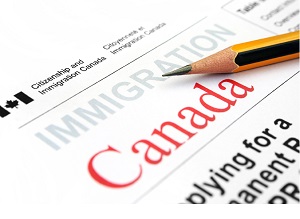
Time to Remedy the Problem of Temporary Resident Permits
co-written w/Yussif Silva, Student Intern, Edelmann and Co. Law Offices Mel is a stateless Palestinian. She grew up stateless in a country that does not
Award-Winning Canadian Immigration and Refugee Law and Commentary Blog

co-written w/Yussif Silva, Student Intern, Edelmann and Co. Law Offices Mel is a stateless Palestinian. She grew up stateless in a country that does not

Immigration, Refugees and Citizenship Canada (“IRCC”) has acted quickly and swiftly to adapt to the changing scene for international students as a result of COVID-19.
Implied Status can be complicated. During the COVID pandemic, I have heard from both employers and employees that understanding when a worker can or cannot
This blog will be going up shortly on Edelmann and Co’s Law Blog. I thought I’d give VIB readers a sneak peak! On 2 September
Hi Readers: I have been relatively quiet of late, grappling, as many are with the deaths of George Floyd, Breonna Taylor, Ahmaud Arbery, Regis Korchinski-Paquet,
Panellist Will Tao, a lawyer at Edelmann & Co. Law Offices in Vancouver, worries that international graduates or students have the most trouble advocating for

Oh, the joys of our immigration practice and the frequent changes it brings along. I am scheduled to speak on study permits this upcoming Friday
Will Tao is an Award-Winning Canadian Immigration and Refugee Lawyer, Writer, and Policy Advisor based in Vancouver. Vancouver Immigration Blog is a public legal resource and social commentary.
he/his/him
Acknowledges that he lives and works on the traditional, unceded territories of the Coast Salish peoples – sḵwx̱wú7mesh (Squamish), sel̓íl̓witulh (Tsleil-Waututh), and xʷməθkʷəy̓əm (Musqueam) nations.
This site reflects my personal opinions and views only and should not be relied on and should be verified prior to any professional use. Please note that none of the information on this website should be construed as being legal advice. As well, you should not rely on any of the information contained in this website when determining whether and how to apply to a given program. Canadian immigration law is constantly changing, and the information above may be outdated. If you have a question about the contents of this blog, or any question about Canadian immigration law, please contact the Author.